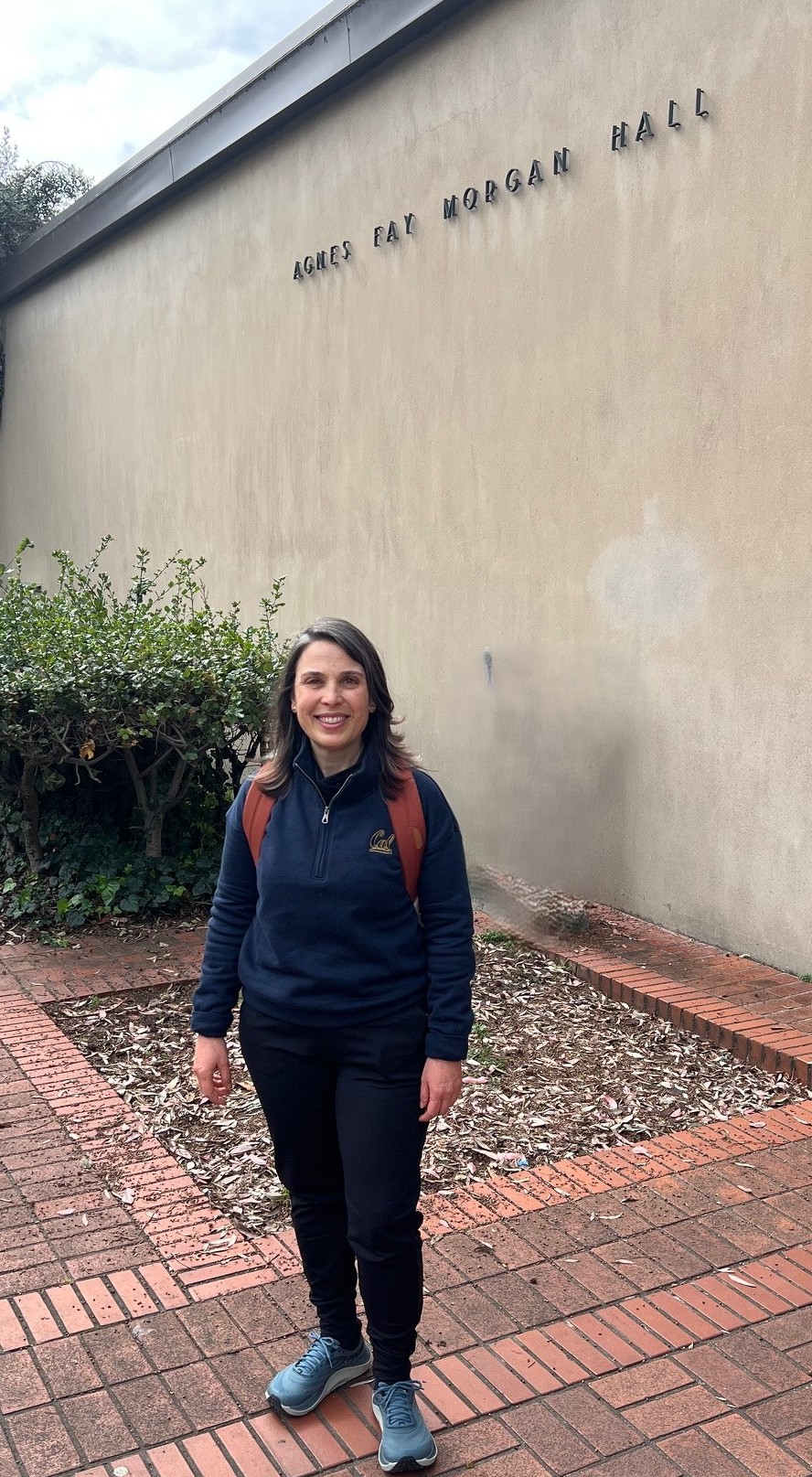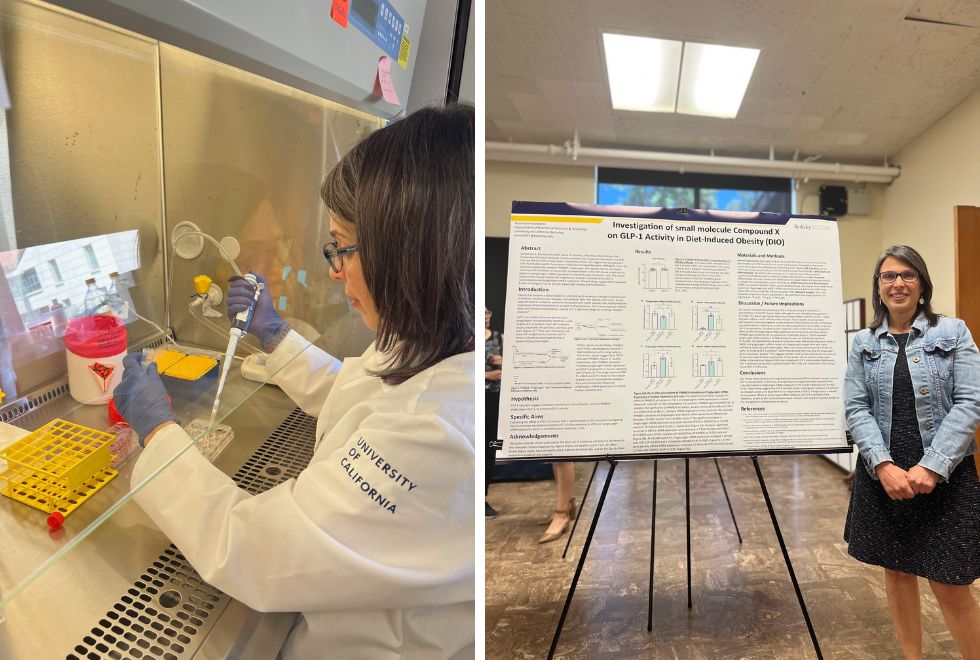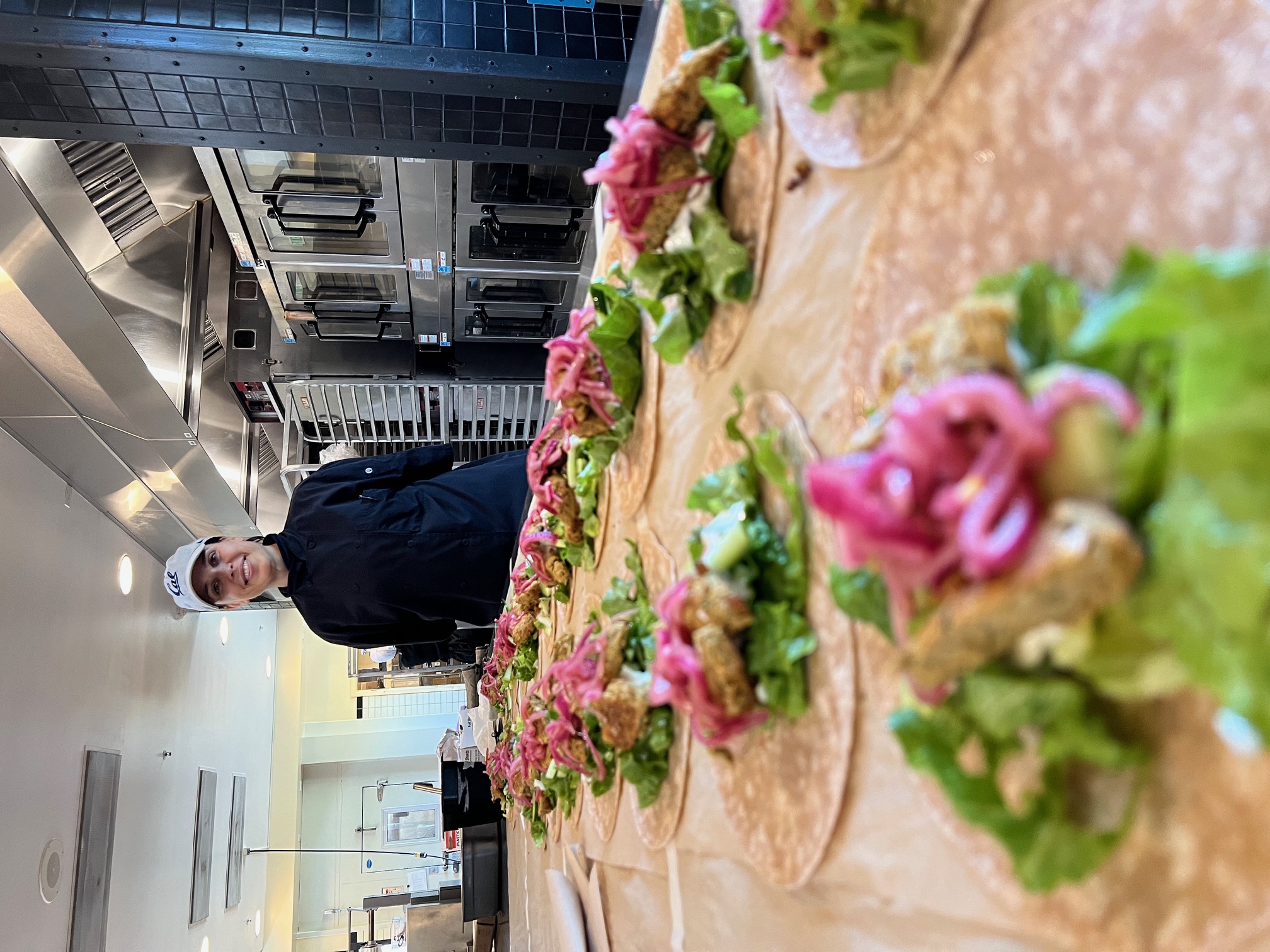
Yesim Goktekin
Yesim Goktekin moved from Istanbul, Turkey, to the East Coast during the mid-90s to pursue a master's in construction management. She relocated to the Bay Area for work after graduating, met her husband (who was then a PhD student at UC Berkeley), and started a family.
But after having worked in construction management for more than two decades, Goktekin decided it was time for a change.
“As I approached the middle of my career, I spent about two years exploring my aptitudes and passions to discover what my next path would be,” she said. “Dietetics has always been attractive to me, and although it was a drastic shift from construction, I decided to embark on the journey for myself.”
In September 2023, Goktekin was admitted as part of the first cohort of students in the Master of Nutritional Sciences and Dietetics (MNSD) program. Developed to satisfy new graduate-level requirements set by the Accreditation Council for Education in Nutrition and Dietetics, the MNSD merges the department’s focus on biological sciences and metabolic biology with the training that students need to become clinicians capable of applying concepts relating to the metabolic regulation of health and disease.
Rausser College spoke to Goktekin about the decision to change careers and her time in the MNSD program.
This conversation has been edited for length and clarity
Why did you decide to change your career?
Even before I studied construction management, I was interested in nutrition and food sciences. It would have been easier and faster to transition to a career in energy efficiency, waste management, or sustainability since I did not have a background in biology, chemistry, or other related sciences. But one of the main reasons that I was attracted to nutrition and dietetics was because you work one-on-one with people. Building those connections and making a meaningful difference truly energizes me.
Once COVID hit, I decided to start taking community college classes through the fantastic nutrition program at Merritt College. Over about three years, I completed all the courses in that program.

Left: Yesim in the lab of Professor Anders Näär during her summer reseearch capstone. Right: At a poster session in Morgan Hall.
How has the MNSD program been so far?
When I began exploring graduate programs, it was my luck that Berkeley had just launched its MNSD program. It was perfect timing, and one of the most attractive things about the MNSD program was that it combined clinical and community nutrition with the opportunity to do research within the Department of Nutritional Sciences and Toxicology.
Mikelle McCoin and the other faculty members curated a great first cohort. Our cohort is a big mosaic of people—there are career changers like me and students who have just completed their undergraduate degrees, as well as people of all ages from different parts of the United States and the world. We get a lot of support from program staff and faculty, especially since they help facilitate internship and rotation placements for us, which not every program does for you. I’ve really liked the science-based metabolism courses and the community-based nutrition training.
What was your research experience like?
We have to complete a summer capstone project between our first and second year. Among many research options, we’re also given the opportunity to participate in metabolic biology labs at Rausser College. We had a presentation day during our first year, where PhD candidates came to talk about the labs they work in and what kind of research we would be doing. There was more than one really interesting project for me to participate in. I didn't feel like I had to settle for something—I knew that wherever I was going to be placed would be an interesting thing for me to do.
My placement was in the lab of Professor Anders Näär, where I worked with PhD candidate Justin Lee. This was my first time working in a lab environment other than my Introduction to Biology lab that I took at Merritt College. I did some hands-on research analyzing mice serum and mice mRNA. It was fantastic—I was fully immersed in all the aspects of the lab work and research, and I even created and presented a research poster to my cohort.
Where did you do your clinical nutrition rotation?
My clinical rotation was at Kaiser Oakland Medical Center, which is a nearly 400-bed hospital with multiple departments, including surgical, inpatient, and intensive care. I was there for about 19 weeks in total and did my rotations on different floors within different disciplines. I was exposed to a lot of clinical experiences, which were comprehensive and educational.
Every new patient is screened based on their nutritional risk, and they get prioritized to be seen by the registered dietitian nutritionists. Each day you have a list of patients that need to be seen. As an intern, I would start by reviewing charts and interviewing patients to collect their nutritional history. From there, I’d conduct a nutritional-focused exam, a physical exam to determine any malnutrition risks, and make an assessment or a nutritional diagnosis if there was one. We would design interventions for that diagnosis and monitor the patient to evaluate how the treatment was going. There are rounds that nutritionists and interns attend alongside the residents, attendings, fellows, and pharmacists—everybody's there as a team.
It was challenging at times, particularly the six weeks I spent in the ICU. The ICU is a hectic place. Things can change very, very rapidly or happen all at once. You might see a patient and talk to them, and an hour later, the patient is intubated. I have had very limited interaction with the hospitals in my life, so I didn’t know how common tube feedings or parenteral [intravenous] feedings were.
Is there a highlight of your experience?

Yesim showcases the falafel wrap recipe she created for Berkeley Unified School District.
I joined the Berkeley Unified School District’s main kitchen at Martin Luther King Jr. Middle School for my food service rotation. It was a very rewarding experience—I have two kids who both went through the Berkeley school system, so I’m familiar with the food and lunchroom. But I worked behind the scenes. It’s a huge production: about 2,500 students receive lunch each day, and everything is cooked there, from scratch, and distributed to other school sites in the district.
We do a little bit of everything during our rotations, but we also have a myriad of assignments or projects that we're supposed to do. One of the major assignments for our food service rotation was to create a new recipe, which was daunting. We all create recipes at home, but here, we had to create something that can be mass-produced. Cooking for one person, or even four or 10 people, is much different than cooking for 100 or 200 people.
And because it’s a public school lunch, it has to abide by certain requirements, like meeting calorie, protein, and serving requirements, or not exceeding certain levels of sodium. It's quite a puzzle to fit it all within those guidelines. You also have to calculate the macronutrients as well as the cost-per-unit, which means it has to be budget-friendly. Every public school gets commodity foods from the US Department of Agriculture. It’s a big plus to create recipes that utilize those ingredients because of the cost savings.
It takes time and is challenging, but it was very rewarding. My recipe item was falafel wraps. It was a big success—everybody loved it, and it has since found its place in the regular menu rotation for the school year.
Where do you hope to take the next phase of your career?
The beauty of the nutrition profession is that you can explore so many different pathways. I see myself pursuing a combination of different areas. Teaching is a big part of it because I love explaining things. I was a graduate student instructor for the Food, Culture, and the Environment (NST 104) course this past summer, and I’m teaching Introduction to Human Nutrition (NST 10) this spring. I was also the nutrition department’s tutor at Merritt College. I really enjoyed my experience in the Näär lab, and can easily see myself doing some kind of research work. I might also continue on to outpatient or community work, where I can directly connect with populations. But in the end, I believe it's going to be a combination of different things.
Do you know of a student or group in Rausser College involved in noteworthy research, community outreach, or extracurricular activities? Let us know by submitting a suggestion with this nomination form.
